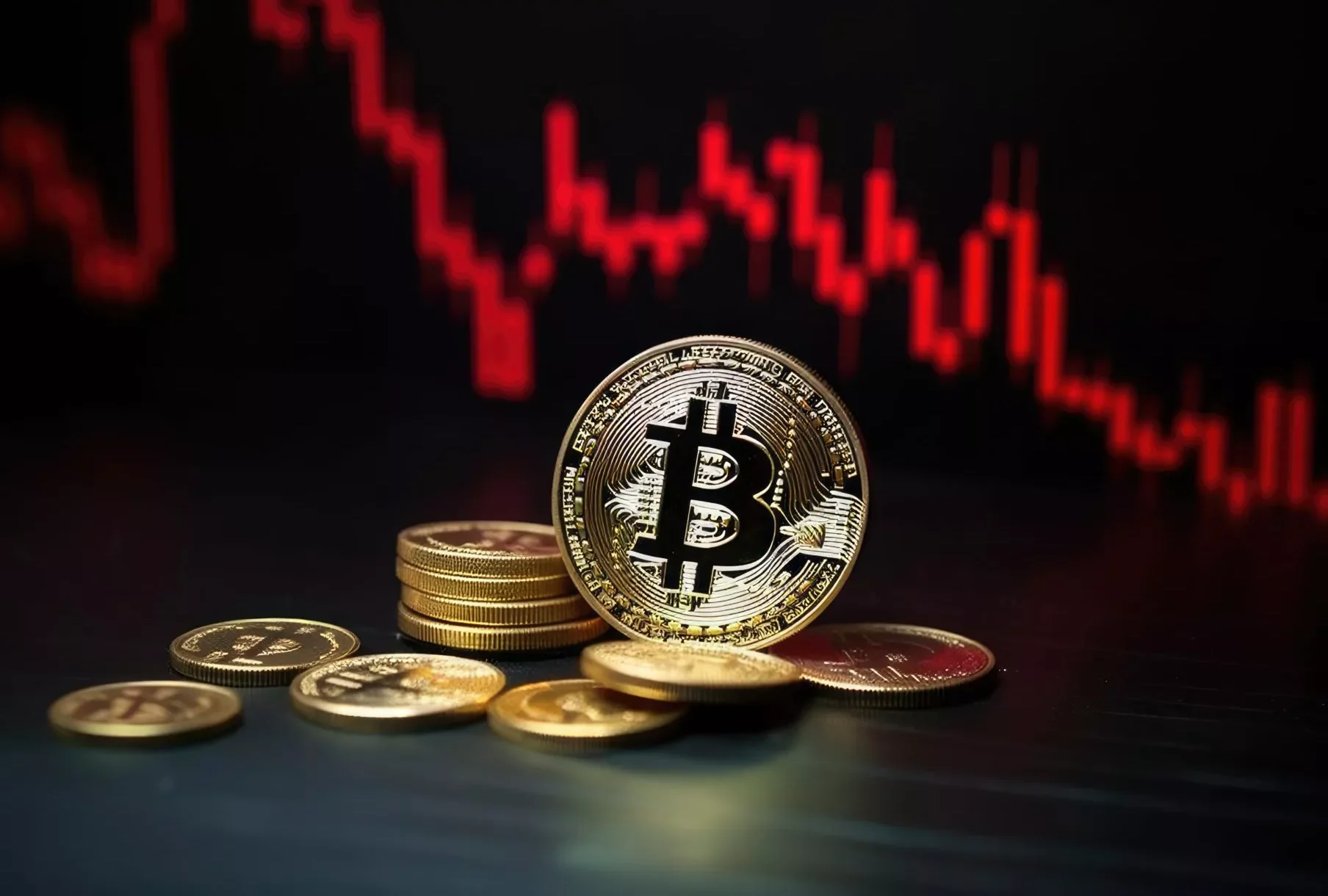Bitcoin ETF Exodus over five straight days of withdrawals, the longest run since January 2024, so Bitcoin (BTC) encountered more selling pressure this week. Led by Grayscale’s GBTC and Fidelity’s FBTC, the withdrawals pulled BTC prices down $63,200—a 12% decline from April’s top of $72,000. Analysts caution that declining ETF demand and macroeconomic headwinds might drive Bitcoin near the crucial $60,000 support level, which has ot crossed since March.
The outflows match a changing risk mood. This week, the S&P 500 dropped 3% due to growing Treasury yields and postponed Federal Reserve rate cut projections. Bitcoin’s 30-day correlation with the Nasdaq reached 0.78, its highest since 2022, highlighting its absorption into conventional markets. “BTC is a risk asset rather than a hedge,” stated 10x Research CEO Markus Thielen. The canary in the coal mine is ETF flows.
Bitcoin ETF Exodus
Led by Grayscale’s GBTC ($420 million) and Fidelity’s FBTC ($150 million), U.S. spot Bitcoin ETF Exodus reported $600 million in net outflows from May 13–17, 2024. BlackRock failed to counteract the flight with only $30 million in IBIT. From April, when ETFs added $1.2 billion amid Bitcoin’s surge to $72,000, the withdrawals represent a dramatic turnaround.
Institutions are cutting crypto exposure before macroeconomic volatility strikes. While 10-year Treasury rates jumped to 4.6%, the Fed indicated just one rate reduction in 2024, down from three expected in March. Higher-for-longer rates impact risk assets, said JPMorgan analyst Nikolaos Panigirtzoglou. “The appeal of Bitcoin’s ETF disappears when Treasury yields provide better returns.”
Bitcoin Mirrors Macros
The slump in Bitcoin reflects that of tech stocks and gold. The U.S. Dollar Index (DXY) rose to 106, a 10-month high, while the Nasdaq dropped 3% this week and gold plunged 5% to $2,300/ounce. Reflecting bitcoin’s sensitivity to dollar strength, its inverse correlation with the DXY strengthened to -0.7. Data on U.S. inflation rocked markets even more.
Rising 3.4% year over year, April’s CPI exceeded the Fed’s 2% objective, lowering expectations for future rate easing. Real yields—that is, Treasury yields less inflation—turned positive, therefore lessening Bitcoin’s value attractiveness. “Bitcoin lives on liquidity, not real yields,” Lyn Alden of Lyn Alden Investment Strategy remarked. The macro setup is bearish.”
Bitcoin Price Decline
The bitcoin price chart shows declining momentum. On May 15, bitcoin fell below its 50-day moving average ($65,000), setting off algorithmic sell-offs. The 200-day moving average ($60,000) maintained since October 2023 is the next main support. A breach might set off a more rapid drop to $58,000. Panic is reflected in derivatives markets. Funding rates on Binance and Bybit have turned negative, hence Bitcoin futures open interest plummeted 18%. In 24 hours, per Coinglass, over $300 million in long holdings were sold. “The market is pricing in a $60K test,” declared CryptoQuant CEO Ki Young Ju.
Bitcoin Miner Struggles
Bitcoin ETF Exodus miners are aggravating the selloff. Per Glassnode, miners sold 8,000 BTC ($500 million) in May to pay expenses, with BTC prices close to production costs ($50,000–$60,000). Underperforming Bitcoin itself, Marathon Digital and Riot Platforms’ shares dropped 20% this week. As unprofitably shut-off machines, the network hash rate dropped 5%. The next difficulty change (May 24) should drop 4%, relieving pressure but indicating miner misery. “Capitulation is under progress,” stated Hashlab Mining CEO Jaran Mellerud. Smaller miners will fold if prices remain low.
Regulatory Pressure Grows
Uncertain regulation aggravates Bitcoin’s problems. The SEC postponed decisions on Ethereum ETFs until July 2024, lowering expectations for more general crypto ETF approvals. Targeting fossil fuel-powered operations, the U.S. Senate also restarted discussion on a 30% tax on the energy consumed in Bitcoin mining. Tensions on a global scale cause strain.
While the EU’s Markets in Crypto-Assets (MiCA) rules put severe compliance costs on crypto companies, China stepped up its crypto crackdown, barring access to offshore exchanges such as Binance. Perianne Boring of the Chamber of Digital Commerce said, “Regulatory hostility is suffocating growth.”
Bitcoin’s Future Outlook
Bitcoin ETF Exodus flows and macro data will determine Bitcoin’s immediate destiny. Risk appetite may be restored with a Fed rate drop in September (now 40% probability, per CME FedWatch). On the other hand, geopolitical shocks (e.g., U.S.-China trade escalation) or sticky inflation could cause even further drops.
Opposing indicators point to possible lows. Reaching 28 (Extreme Fear), the Crypto Fear & Greed Index exceeded previous January and October 2023 surges. With 70% of the BTC supply unaltered for over a year, long-term holders stay firm. “Weak hands are gone,” stated co-founder of Glassnode Yann Allemann. “This creates conditions for a rebound.”
Conclusion
The decline of Bitcoin toward $60K shows a perfect combination of macroeconomic forces, ETF outflows, and miner capitulation. The increasing link of the cryptocurrency with conventional markets compromises its story as “digital gold,” thereby subjecting it to the same forces pounding stocks and bonds. Long-term fundamentals—scarcity, institutional adoption, and halving-driven supply cuts—remain robust even when technicals and sentiment point farther south.
One important test is the $60K level. A rally might draw in stalled consumers, but a breakdown might set off panic selling. Right now, macro changes and legal certainty define Bitcoin’s future. Investors should prepare for volatility and remember that sometimes the worst of crypto’s hours follow its best ones.











